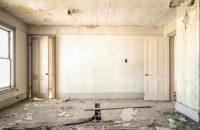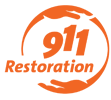Disaster Restoration Tips for Residents
 Leaking pipes, burst sewer lines and natural disasters can all have a negative impact on your house and can leave it severely damaged and in need of restoration. If your property has gone through water damage, due to any cause whatsoever, you have to consider the different facets to it and act urgently to avoid the damage from causing further harm and damage to the property.
Leaking pipes, burst sewer lines and natural disasters can all have a negative impact on your house and can leave it severely damaged and in need of restoration. If your property has gone through water damage, due to any cause whatsoever, you have to consider the different facets to it and act urgently to avoid the damage from causing further harm and damage to the property.
Water damage in the house can be extremely difficult to deal with. The problem can become even more problematic if it leads to other challenging problems down the line. These repairs require help and expertise from a proper professional, who has the professional acumen to oversee the challenges and come up with a desirable solution to them.
In this article, we take a look at the different angles to water damage inside homes and consider all the tips you can follow for the restoration process. Go through this article to see what is required of you during the restoration process.
What Does Water Damage Do?
While water is critical to life, it can also leave behind a number of significant damages if it is not contained. Water damage inside the house can leave you with a big mess to look after. As a homeowner, you should know of the areas that can be impacted by water damage and should have a proper strategy in mind to deal with the challenges that come with water damage.
Some of the locations that are most susceptible to water damages include:
- Drywall
- Plaster
- Insulation
- Wood
- Framing
- Floor coverings
- Electrical wiring
- Pipes
- Appliances
- HVAC
Water can also damage your house’s foundation and lead to a hefty restoration amount if the damages are left unattended.
Water Damage Restoration Tips for Your Home
Now that you know of the areas you should access after water damage inside your home, we will now discuss some of the restoration tips you can follow.
Disconnect all Outlets
It is extremely necessary that you disconnect all outlets inside your home. The first thing to do after you see the first signs of water damage is to disconnect all outlets around you. Even if you aren’t sure of the severity of the water damage, you should run and take out all electronics and be cautious around main power lines and gas lines. Using your electric equipment despite the water damage and the stagnant water around you will lead to explosions and even electrical shocks. Be careful around electrical equipment until you haven’t shut down the main power line.
Inspect Mold
Certain forms of mold can be extremely toxic for humans in the long run and can even pose serious health risks. You need to be cautious of mold and should make sure that there are no forms of mold around you at the time of water damage.
Mold can spread quickly around an area after it first infects it. It is, hence, in your best interest to unearth signs of mold inside your home after the water damage and do whatever you can to make sure that the affected area is isolated until professional help is acquired.
You need to shut down all airflow coming from the infected mold area and make sure that you call in the required specialists to look into the problem. Specialist help will allow you to uncover the problems in the area and what other tips can be followed.
Dry Out Water
Once you suffer from water damage inside your home, you should make sure to dry out all forms of water and make sure that the area is free of stagnant water. You should eliminate water from all affected areas. The best way to do so is either through a sump pump. However, if you don’t have one, you can use a large capacity dehumidifier to do the job for you. You can circulate air around your damaged rooms to dry the carpets out.
Disinfect Areas
It is necessary that you disinfect all areas of the home to minimize the chances of bacteria around the space. Bacteria and other hazards can cause severe health problems and can lead to issues in sanitization. The stagnant water around your place can also lead to more bacteria and mold, which is why it is recommended that you quickly take out your drying equipment and disinfect the place.
Remove Damaged Materials
Chances are that you might have some damaged materials lying around after the water damage as well. It is best for you to identify these damages and take away the damaged materials from the vicinity. The damaged materials can lead to falls and injuries later on, which is why the best course of action is to take them away immediately after the damage happens.
Water damage restoration can be an extensive process if you don’t have the right team available. 911 Restoration of Mississippi Gulf Coast is just a call away for you! You can get in touch with us to perform a thorough inspection of your sewerage and clear it up for future use.

